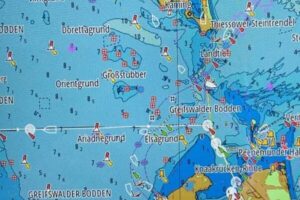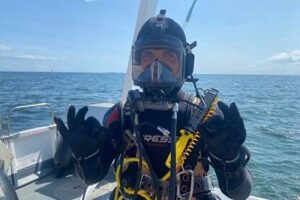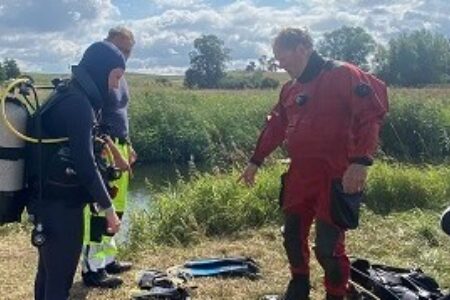Greifswald & Tollense field school - Part 2
During the months of July and August, students from Leiden University, Rostock University and Göttingen University research shipwrecks in the Greifswald Bay and a prehistoric site at the Tollense river in Germany. Dion Stawrianidis tells about the research on wreck 88 in the Gulf of Greifswald.
Starting research on wreck 88
On the fourth day of the field school, the team from Leiden, along with the team from Rostock, set off early in the morning with the Research Vessel Limanda. We were hopeful that the weather would allow us to conduct research on shipwreck 88. Our fieldschool supervisors Jens Auer (State Office for Culture and Monument Preservation), and Professor Martijn Manders (Leiden University/Cultural Heritage Agency of the Netherlands), led the team. The wind was calm, presenting no significant challenges for diving.
We departed from the harbor at 8:00 AM, heading towards our dive location as scheduled. Our tasks for the day included cleaning, which would help the team in identifying different parts of the ship and would also be beneficial for photogrammetry purposes (i.e., acquiring information from multiple angles to possibly convert all that information into a 3D model). This will intricate details for further analysis.
Based on previous surveys, the boat captains were able to place a buoy near the wreck.

Condition of wreck 88
Gunnar (the skipper of the Limanda) explained to us, using his digital navigation, that it is not without reason that wrecks are lying in these shallow waters. "Here you can see clearly that wreck 88, just like many other wrecks, has perished over the years. This sandbank separates the Gulf of Greifswald (bay) from the Baltic Sea. On either side, it is 6 meters deeper."
Everyone has a task
After managing the necessary safety checks, the first divers descended to a depth of 3.5 meters using the buoy and a line, successfully locating the wreck. The team explored the wreck and began with cleaning the wooden frames, planks, hull, beams, and side beams. Others on board received instructions to make drawings with the corresponding measurements on an underwater slate during each dive. Throughout the day, we carried out various underwater activities as our work progressed.








0 Comments
Add a comment